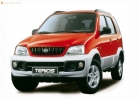Daihatsu Terios 2000 test drive - 2005 SUV
Dzhipat
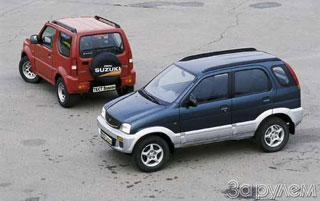 Suzuki Jimny, originally created for the Japanese market, was represented in Europe in the fall of 1998. Available with a three -door four -seater body, with rear or all -wheel drive. The engine is gasoline, 1.3 liters, gearboxes - a five -speed mechanical or four -speed automatic.
Suzuki Jimny, originally created for the Japanese market, was represented in Europe in the fall of 1998. Available with a three -door four -seater body, with rear or all -wheel drive. The engine is gasoline, 1.3 liters, gearboxes - a five -speed mechanical or four -speed automatic. Daikhatsu Terios debuted in 1997. The body is a five -door five -seater, the drive is full, the engines are three- and four -cylinder gasoline, a working volume of 0.7 and 1.3 liters, respectively, the gearboxes are a five -speed mechanical or four -speed automatic one.
In the representation of an ordinary motorist, an all -round is almost a tank: large, powerful, expensive and ... impudent. (The latter is more likely to be eager for self-affirmation of drivers to mechanics.) But there are other all-terrain vehicles: tiny, completely manual and not so biting at a price. With such a couple we met in the last autumn days - Jimny Suzuki (GLX equipment, $ 13,300) and Dayhatsu Terios (SOP SX, $ 15,600).
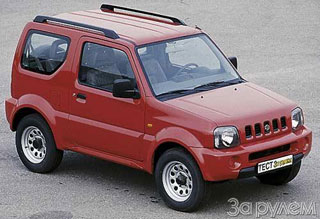 So small, but already a jeep
So small, but already a jeep More precisely, jeepenish. This definition is attributed to Suzuki without stretching, it has everything, like an adult: a massive steel frame, to which a body is attached to the rubber pillows, the unreasonable beams of bridges on powerful longitudinal levers, connected (hard, without a center differential) front -wheel drive, lowering the transmission of handout, worm steering.
Daikhatsu is closer to a light car: the body is a supporting car, although its spaces are not inferior to a separate frame, there is no river steering wheel, there is no reducing transmission, the drive is a constant full with a forced electronic blocking of the center differential, the front suspension is a mac -farson, and a dependent on the back - a dependent on the back Five jet rods (like Lada). But under the hoods of both are very similar in characteristics and, at first glance, not at all suitable for all -terrain vehicles of the buzzing: sixteen -valve, only 1.3 liters, with a maximum moment at 4500-5000 rpm. However, evaluate the motor for his affairs.
We will emerge from under the machines - in the end, they do not buy a suspension or a drive. This, using the cook terminology, is only ingredients: the consumer is more important than the taste than the recipe.
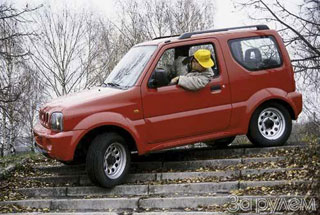 Mal is small less
Mal is small less Jimny's three -door Suzuki looks in proportion to the complicated strong. True, very small, which is why he has a salon with a snuffbox. In front, two uncles of the 54th size, and even in winter clothes, choose all the gaps - width at a shoulder level of 1220 mm, like Oka. And so that with their feet they are not particularly twisted, just at the knee level angular stands on the doors - remote control panels of electric windows. On the length and high no complaints are enough.
For two rear passengers, the size of not a jacket is already critical, but trousers - the seat is squeezed between the wheel arches and its width is only 960 mm. And it is desirable to have legs shorter so as not to hug the back with his knees. In terms of the length of the spinal column, no restrictions - with an increase of 180 cm above the head, eight centimeters remain, moreover, the halves of a split (50/50) back are adjustable along the angle of inclination.
Let's look into the trunk: not every suitcase will enter such a breadbacket - only 113 liters, Oka has almost twice as much, 210 liters. You can, however, fold the rear seat (in parts or entirely), but it still rises above the floor and it does not work out a flat cargo platform. The rear door opening to the side is equipped with a gas emphasis, which strives to open it wide, regardless of the car standing behind.
Daikhatsu Terios from a distance, somewhere in the clean field, you can take for a large five-door all-around on almost Bigfutian wheels. And only approaching closer or putting an ordinary car nearby, you understand its true size. It is a little longer, higher, but even smaller in width and rut than Jimny, and therefore resembles a matchbox set to one side. For front passengers, he is also reasonably generously generous with length-highs and stingy in width. The inner door handles are designed, it seems, for the liliputs - an adult man can hook them with only one finger. By the way, about the fingers: electric windows on both machines are incredibly powerful and easily crush the resistance of not only the glass frozen in winter, but also ... in general, more closely, especially if children are with you.
The rear passengers are honor and respect, for them their own doors, a separate entrance. And in order not to be arrogant, let them learn the landing in three tricks: first sit down to select the wheel niche, then immerse your legs, then transfer to the seat. They sat down - relaxed. Rudimentary wheeled arches slid into the trunk and do not crowd the schedulges, the front backs moved forward and do not rest on their knees - in general, it will be more sprayed.
Ta-ak, what is there on the coccyx? Yes, this is a locking of the middle seat belt! The car is five-seater. Divide 1205 mm width into three passengers - in theory it is easy, in practice is not enough.
What is the trunk? This is already like something - as much as 210 liters. Not a wagon, of course, but you can still add a split (50/50) rear seat. And the site here turns out to be flat.
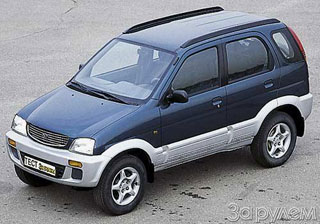 On the Startik!
On the Startik! We’ll come out at the wheel for now, trying to at least slightly move away from the door.
Suzuki Jimny: the ignition lock is located in the invisible zone; good lever of the box - right at hand; The framework headrests almost do not reduce the already small viewing sector through the inner mirror, but hefty external burdocks are good. Everything else is normal.
Daikhatsu Terios: Here the steering wheel and pedals are noticeably shifted to the left (although it is worth talking about it if people get used to even the right steering wheel); There is no site under the left leg, and the right rubs on the tunnel of the floor; The passages of the lever of the box are minimal, but the power efforts are great; The rear window is not enough because of the wide racks and in addition is blocked by a pair of headrests. But the range of longitudinal adjustment of the seat is wide.
However, the starting gun is already aimed at the sky. Ba-bah !!!
From the start, a half -corps plays a half -corps. It is understandable: firstly, the total gear rates in I and II programs are noticeably larger than, and, secondly, all-wheel drive better realizes a high torque on wet asphalt. Further - the struggle on equal terms with varying success, but the first finish ribbon tears Jimny, honestly laying out passports 140 km/h. The opponent was slightly behind - it is hard to twist the all -wheel drive transmission (Jimny in the 2n version of its front half rest due to automatic wheeled couplings).
More subtle differences in characters illustrate elasticity indicators (see table).
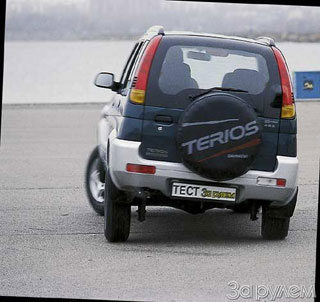 Subjective impressions fully confirm the dry digital, which is not always. Jimny is balanced, loves a steppe riding, calmly reacts to the provocative jerks of a non -very informative steering wheel, at high speed it rustles slightly and growls displeasedly, significantly scribbles and shakes on bumps, pretty cozilit and sways on irregularities. What can you do, this is still an all-terrain vehicle: a strong hard suspension is configured for an uncompromising struggle with pits and boulders, and not cracks in the asphalt, and rather breaks the driver than herself breaks. It is then, with such a small volume of the engine, and a low gear in the handout will come in handy.
Subjective impressions fully confirm the dry digital, which is not always. Jimny is balanced, loves a steppe riding, calmly reacts to the provocative jerks of a non -very informative steering wheel, at high speed it rustles slightly and growls displeasedly, significantly scribbles and shakes on bumps, pretty cozilit and sways on irregularities. What can you do, this is still an all-terrain vehicle: a strong hard suspension is configured for an uncompromising struggle with pits and boulders, and not cracks in the asphalt, and rather breaks the driver than herself breaks. It is then, with such a small volume of the engine, and a low gear in the handout will come in handy. Terios is fashioned from another dough. It is sluggish at low speeds, but wakes up to thousands to three to four and then loudly, with excitement spins as much as seven, provoking a dynamic driving style. Its reactions are also acute and moderately sharp, and he holds the trajectory no worse than another passenger car, not annoying with scanning and swinging, although it is noticeably rolling in corners. Powerful brakes with ABS are good. The suspension at first seems harsh, but then you notice that you almost do not have to slow down in front of the potholes. The off -road for this machine is not a norm, but rather an episode. Yes, you can move to something intersected and even mole the bushes or sample shallow snow - good, the motor compartment is well protected. But do not forget that the lowest point under the body is a non -cheap catalytic neutralizer, and build four wheels stuck in the mud with a dimension of 205/70R15 with a 1.3 -liter engine without a reduced transmission, even burning the clutch.
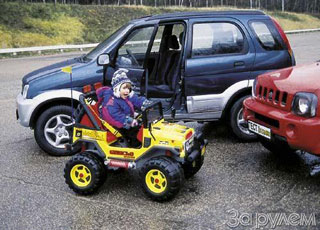 Wrap, buy
Wrap, buy And to health. Just keep in mind that the guarantee for Jimny Suzuki is three years or 100 thousand km, and for Daikhatsu Terios - one year or 20 thousand km at the frequency of service, respectively, 15 and 10 thousand km. Both babies consume ordinary 92nd gasoline, however, exceptionally non-ethyl.
Suzuki Jimny
+ Good cross -country ability, strong chassis, the presence of low transmission in the handout, large external mirrors, prolonged guarantee.
- Hard suspension, screening and swinging on irregularities, an uninformative steering wheel, increased noise at high speed, a large radius of turning, a narrow interior, a close rear seat, a small trunk.
Daikhatsu Terios
+ Clear reactions on the road, effective brakes, minimal scouring and rocking, protection of the motor compartment.
- low off -road qualities, lack of a lowering gear, unprotected neutralizer, rolls in a bend, a narrow salon, the rear seat is cramped for three.
The editors thanks the company
Nippon-Kars, Ventus and the Children's Mir Center for the cars provided.
Similar? Similar. But ... different.
Suzuki Jimny: A real SUV, albeit small, with almost all the advantages and disadvantages inherent in the class.
Daikhatsu Terios: In appearance - a jeep, in fact - an all -wheel drive passenger car with an off -road accent.
Yuri Nechetov
Photo by Vladimir Knyazev
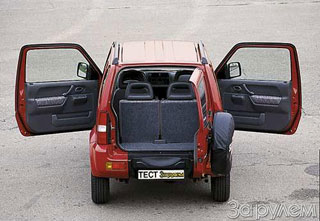
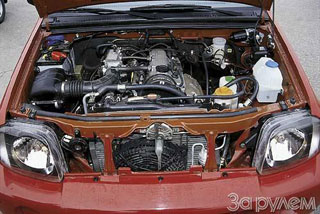
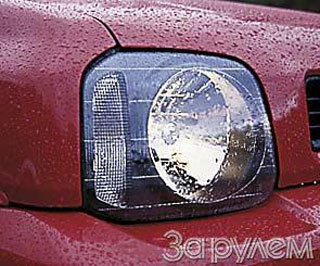
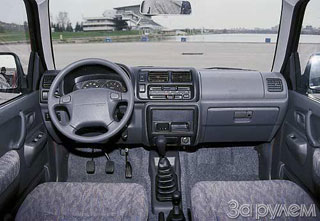
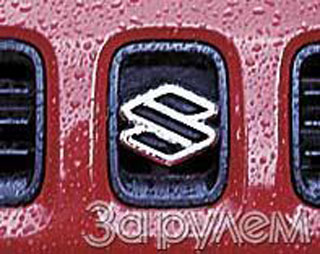
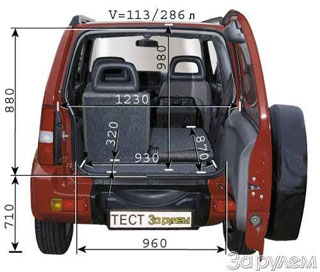
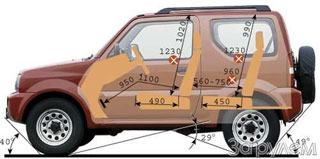
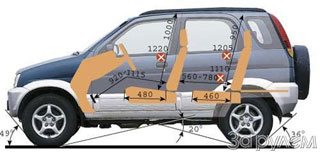
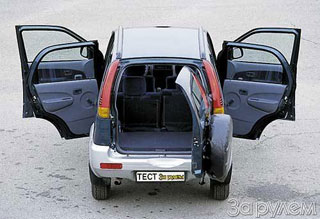
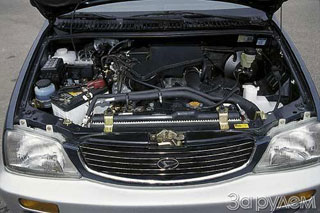
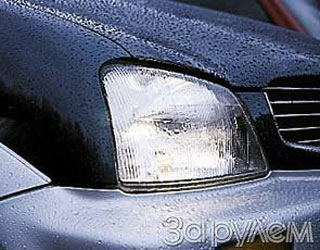
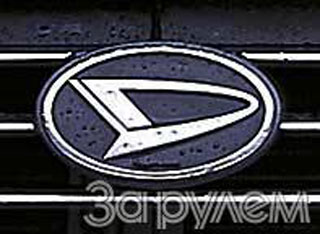
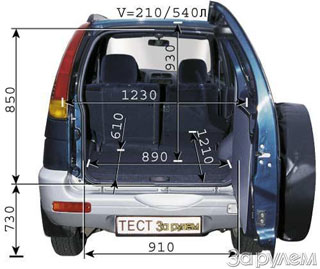
Source: The magazine "Driving"



